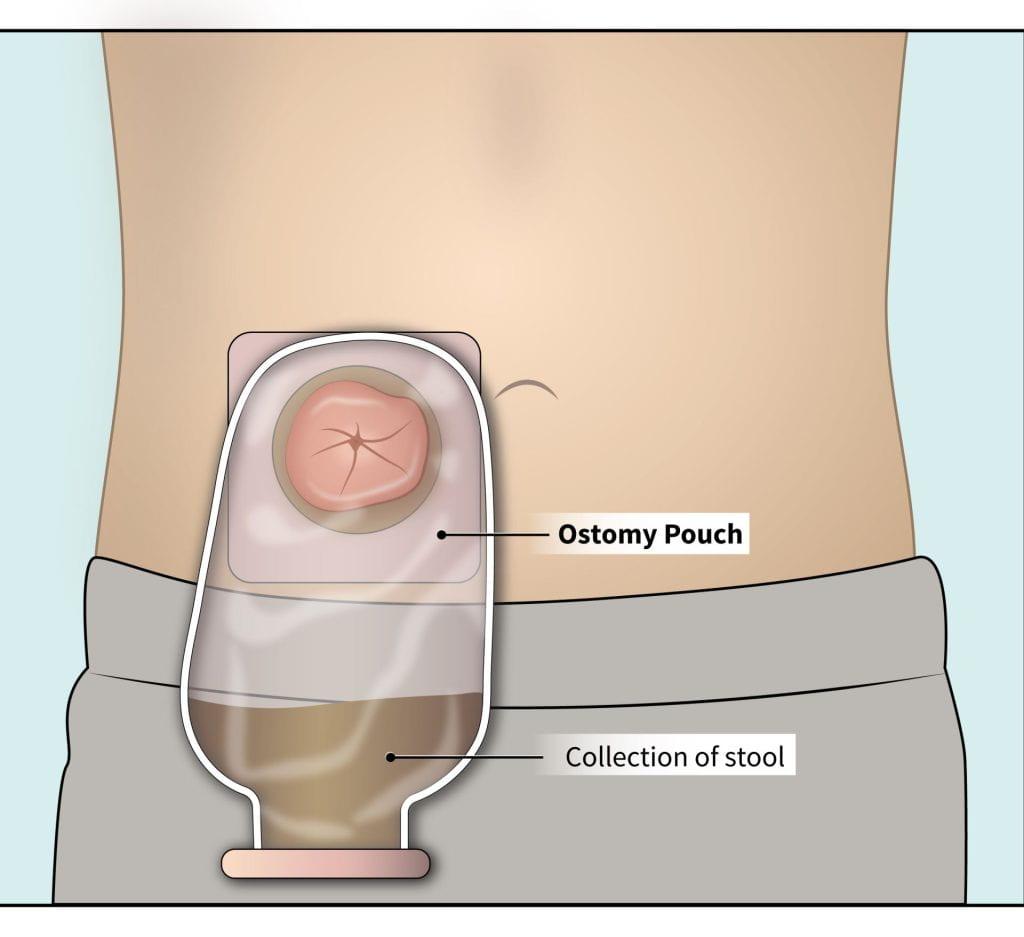What Is an Intestinal Stoma?

AA stoma is a surgically created small opening in the tummy area (abdomen) to redirect the normal flow of stool to be collected in a bag. This is sometimes required during gynaecological cancer surgery if the tumour affects the intestine (food pipe).
There are mainly two types of intestinal stomas, depending on the patient’s requirements:-
- Colostomy: taking part of the large intestine to the surface of the abdomen
- Ileostomy: bringing a part of the small intestine, to the surface of the abdomen
Most diversion stomas are temporary, but some may be permanent, depending on the patient’s health and treatment plan.
Why is diversion stoma done?
- The most common indication of diversion stoma is ovarian cancer involving the bowel
- Surgery for gynaecological cancer where multiple intestinal loops are removed
- For symptom relief in patients with severe side effects after radiotherapy
Purpose of Stoma:-
After a long surgery for cancer, your body needs time to heal. A stoma acts by redirecting waste away from the operated intestine and giving your body the rest it deserves.
Basic care of the stoma:-
Here are some of the things you can do to keep your stoma in good condition and the surrounding skin healthy:
- Ensure that the pouch opening is of the correct size
- Avoid leaks by emptying the pouch frequently
- Change the bag at the recommended interval
- Use water to clean the skin surrounding the stoma
- Use skin protective barrier spray to ensure the skin around the stoma remains healthy
- Engage in regular physical activity as tolerated but avoid lifting heavy weight or strenuous activity that may put pressure on the stoma.
Common Challenges:-
- Leakage of the stoma bag is common. You can avoid leaks by proper application of the bag and regularly emptying the bag before it’s too heavy. The bag needs to be changed every 7-14 days or whenever it is loose for any reason.
- Skin irritation around the stoma can be prevented by avoiding leakage and using skin barrier lotions.
- Adjusting to life with a stoma may be challenging emotionally. Changes in body image, limitations in physical activity and social stigma sometimes pose greater problems than cancer itself. Discussion with a professional counsellor is vital during this time.
How do I manage daily life with a stoma?
Learning to live with your stoma takes time. Following your surgery, a stoma therapy nurse will show you how to clean your stoma and change your bag. It’s not easy at first, but with the right help and support, it becomes easier to manage the stoma as part of the daily hygiene routine. Here are a few pointers to help you manage daily life with a stoma:-
- Some foods may produce more gas than others, like, onion, dals and cabbage. You may consider reducing their intake.
- Curd, buttermilk and probiotics help in reducing the odour.
- While travelling, keep extra stoma bags and accessories.
- Be in touch with the stoma nurse in case of emergencies.
Your journey with a stoma is as unique as you are. Reach out to your surgeon or stoma nurse for personalized support and guidance, because with the right team by your side, there’s no problem too daunting.
